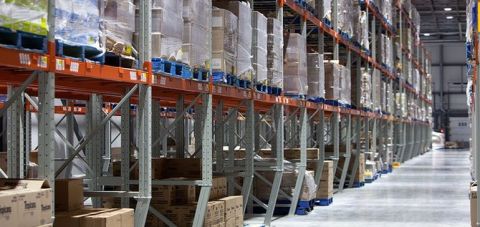Warehousing Facilities Expected to Surge Across India and especially in Tier-2 and Tier-3 Cities
Indian government is focused on improving manufacturing facilities across the country and infrastructure requirements in tier-2 and tier-3 cities have been rising in the recent years. While the government is spending on improving infrastructure, private players are also adding warehousing & transportation capabilities. A report on warehousing clusters by ANAROCK follows.
High-intensity focus on making India a global manufacturing hub has caused warehousing clusters to expand rapidly beyond the top cities and into tier 2 and 3 cities, reveals ‘Indian Industrial & Logistics – Gearing Up a Global Manufacturing Hub’ – a joint report by US-based Binswanger Commercial Real Estate Services and ANAROCK Group. The two firms recently joined hands to offer boutique advisory, brokerage and transaction services on industrial real estate opportunities between India, USA and other global markets.
The report says that demand for small and multi-location warehouses is expected to rise significantly. Most of these emerging clusters are aligned with the industrial and freight corridors being developed in the country. The emerging tier 2 and 3 warehousing clusters include Ludhiana, Ambala, Lucknow, Siliguri, Guwahati, Bhubaneshwar, Vishakhapatnam, Vijaywada, Coimbatore, Kochi, Nagpur, Indore, Jaipur and Dholera.
Shobhit Agarwal, MD & CEO – ANAROCK Capital says, “The rising demand for Grade A warehousing properties across the country is a key trend. Our data indicates that there is more than 110 mn sq. ft. of Grade A warehousing stock available across the country - most of it in the top 8 cities. 3PL (third-party logistics) and e-commerce are the largest occupiers of warehousing space. There is a massive opportunity for Grade A warehousing development in the smaller cities amidst rising demand.”
The report highlights that nearly USD 7 bn worth platforms have been created for the warehousing sector since 2015. Over USD 2 Bn in PE investments have been infused in the Industrial and Logistics sector between 2017 and Q1 2020. Investors are upbeat on this sector and are working closely with developers to identify warehousing investment opportunities.
Emerging Trends in Warehousing
Jeff Binswanger, Managing Partner, Binswanger International says, “COVID-19 has exposed the challenges of consolidation within the warehousing sector. The market is expected to de-centralize to mitigate future disruption, ensure business continuity and ease operations. To contain costs and maintain social distancing norms, automation will become a major focus area. Also, e-commerce will flourish in the post-COVID-19 era, giving an edge to online businesses which will eventually boost new warehousing demand - particularly multi-level warehouses within city limits.”
The current government has created a fertile arena for growth, with the total approvals needed to set up a warehouse in India reducing from 33 in 2015 to 15 by 2019-end. Likewise, the time taken to construct a warehouse has reduced to 3.5 months from the previous 6 months during the same period. Meanwhile, India’s high logistics cost – at 14% of its GDP - is still better than China’s 15%.
